Until 1800 Piazza Navona was transformed into a lake
Did you know? Until 1800 piazza Navona was transformed into a lake. In 1652 the Pope began the custom of flooding Piazza Navona to give relief and refreshment to Roman citizens during the summer: every Saturday and on Sunday in August, the fountains were closed to ensure that the water overflowed from the pools to flood the square, which thus turned into a real lake. Piazza Navona is one of the most famous squares in Rome and in the world. It is one of the most spectacular and characteristic urban complexes of Baroque Rome.
The square is bordered by the buildings that were built on the remains of the Stadium of Domitian: the shape and dimensions of the track are preserved. Over the centuries the space has been the scene of popular festivals, races and jousting. From the seventeenth century to the mid-nineteenth century the square, which then had a concave bottom, was partially flooded to offer refreshment and entertainment for everyone.
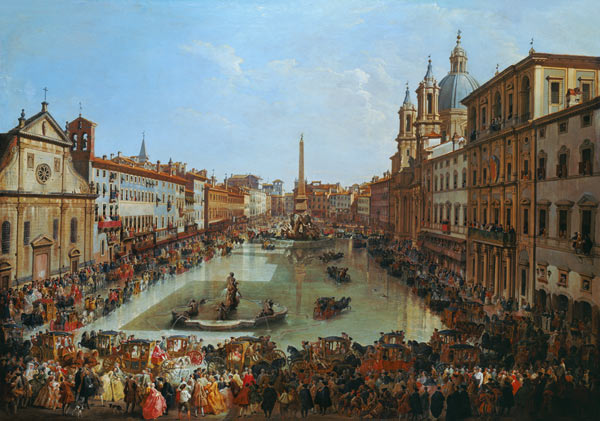
On 23 June 1652 Innocenzo X arranged the first “Lake of Piazza Navona”, to form which, as the chronicler of the time Giacinto Gigli wrote, “at the foot of the Guglia and the fountains the water was fixed … and it was used for fun of the carriages, which passed over it “.
Giggi Zanazzo, a chronicler of the time, says: “All Saturdays and Sundays in August, the sewer of la funtana de mezzo de piazza Navona was seized, and the square that had been built down, was all flooded. What great fun! There was mmatina in carriages, or in carettella. I remember having it with my father wallowing in the water, for example, the muddy róte de la carrozza, when I get back to the caves of Testaccio “.
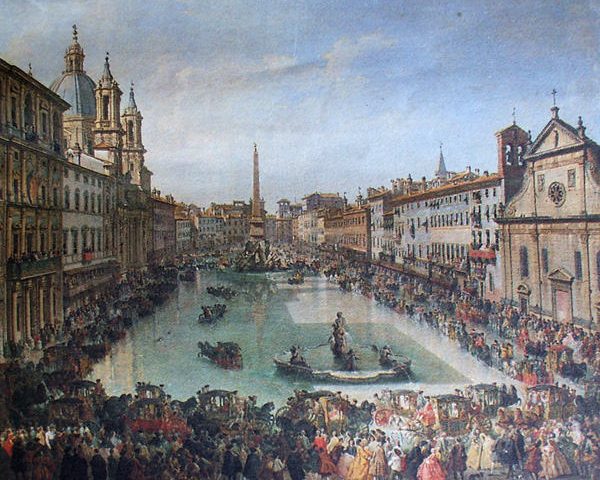
Once, Piazza Navona was a concave square that favored “flooding”. The flooding of Piazza Navona was an event in which neither the aristocrats nor the common people were lacking.
This tradition lasted until 1676, when – for fear of epidemics – the flooding of the square was suspended, then it stopped, then resumed. In 1703, the pope’s doctor – Giovanni Maria Lanosi – declared that water did not favor the transmission of epidemics if the square remained clean. The tradition of flooding continued in this way until 1865, the last known date of this practice.
On the occasion of the flooding, small musical performances were even staged, in fairy-tale scenarios that the Queen of Poland could also attend on one of her visits to Rome. People – looking out from the balconies – admired those who showed off their creativity and originality. A project to build mobile bleachers has even been found to favor spectators.

The original shape of the current square faithfully follows the perimeter of the ancient stadium that Domitian had built in 86 AD. C. for athletics and horse racing competitions. The remains of this ancient structure are located a few meters below today’s street level and can still be seen under a modern building in Piazza di Tor Sanguigna and in the basement of the church of Sant’Agnese in Agone.
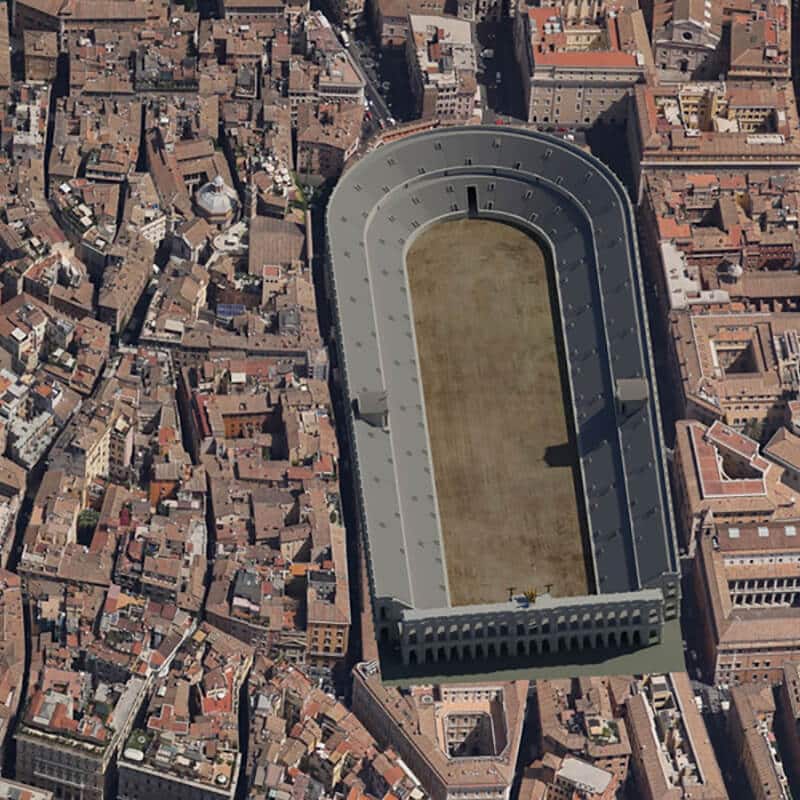
It is one of the most famous monumental squares in Rome and in the world, built in monumental style by the Pamphili family at the behest of Pope Innocent X (Giovanni Battista Pamphili) with the typical shape of an ancient stadium.
As mentioned, Piazza Navona, at the time of ancient Rome, was the Stadium of Domitian which was built by the emperor Domitian in 85 and was restored by Alexander Severus in the third century. It was 265 meters long, 106 meters wide and could accommodate 30,000 spectators.

The stadium was richly decorated with some statues, one of which is that of Pasquino (perhaps a copy of a Hellenistic parchment group presumed to represent Menelaus supporting the body of Patroclus), now in the homonymous square next to Piazza Navona.
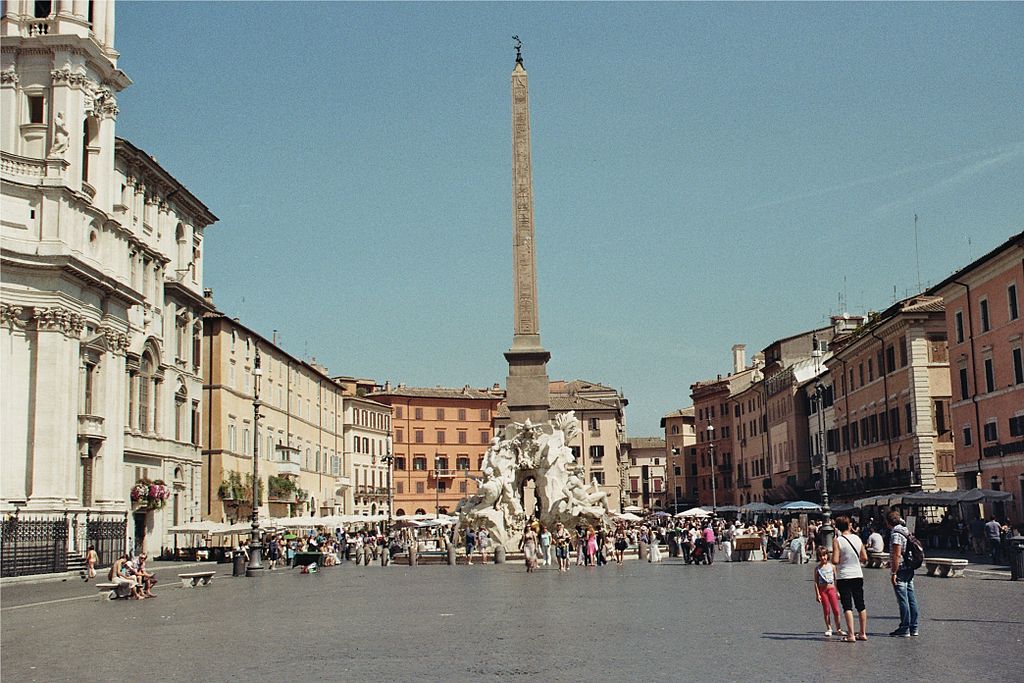
It was a stadium and not a circus, there were no carceres (the gates from which the racing horses came out) nor the spina (the dividing wall around which the horses ran) such as the Circus Maximus, but it was all free and used for athletes’ competitions. The obelisk that is now in the center of the square was not there, but comes from the circus of Maxentius, which is still on the Via Appia.
The name of the square was originally “in Agone” (from the Latin in agonis, “games”) because the stadium was used only and exclusively for athletics competitions. In ancient times the square was concave, the closures of the three fountains were blocked and the water came out in order to flood the square.
Between the 10th and 11th centuries, the Campus Agonis with its Cryptas were wholly owned by the Abbey of Farfa, to pass entirely under the control of the Roman magistrate of the Capitoline chamber in the 13th century to be periodically used for recreational use.
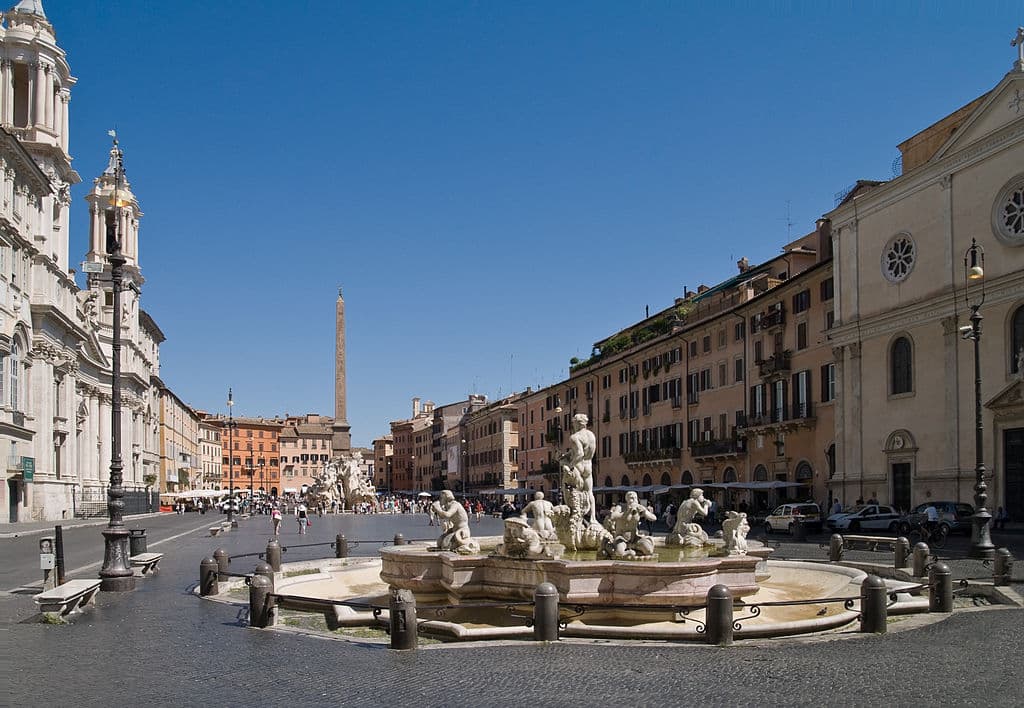
The playful use of the square (competitions, races and water events), born in ancient times, will last until the late Renaissance period when it still appears as an area used for knightly training and carnival games.
Between 1810 and 1839 the jockey races were held in the square, that is, horse races mounted (which, however, were not related to the most famous barber races in Via del Corso).
Piazza Navona description: Piazza Navona is a symbol of Baroque Rome, with architectural and sculptural elements by Gian Lorenzo Bernini (the Fountain of the Four Rivers in the center of the square, which represents the Danube, the Ganges, the Nile and the Rio della Plata, the four corners of the earth), Francesco Borromini and Girolamo Rainaldi (the church of Sant’Agnese in Agone, in front of the Bernini fountain) and Pietro da Cortona (author of the frescoes in the gallery of Palazzo Pamphilj).
The square was supposed to celebrate the greatness of the Pamphili family (in a sort of competition with the Barberinis and the Farnese) and Innocenzo X (born Giovanni Battista Pamphilj) wanted the palace of the same name to be erected there and the square to be adorned with huge works value. For the rearrangement of the area, therefore, the demolition of some blocks was resorted to, such as the Cybo and Mellini buildings, while the tender for the award of the orders was fought without exclusion of expedients between the main architects of the time.
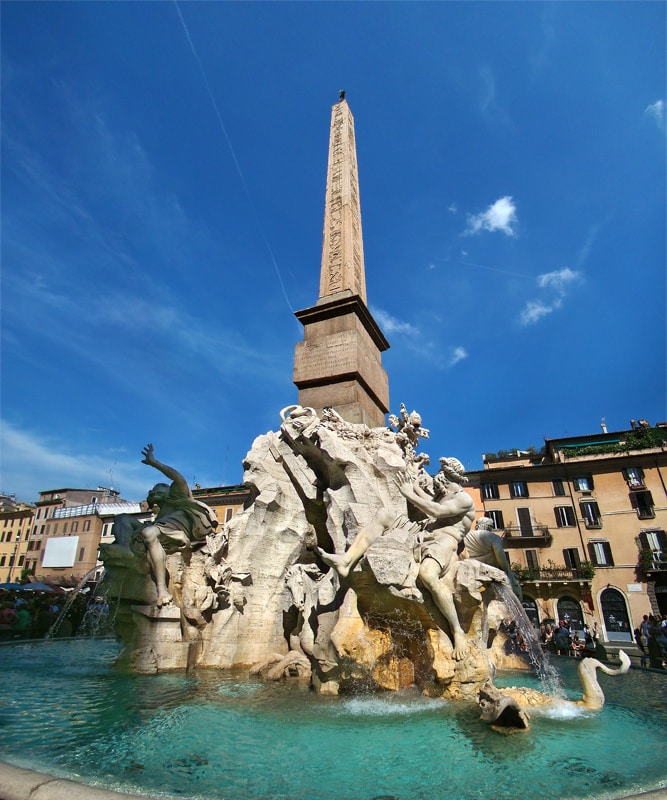
Piazza Navona also has two other fountains: the Fontana del Moro, sculpted by Giacomo della Porta and retouched by Bernini, located in the southern area of the square, and the Fontana del Nettuno (originally the Calderari fountain), located in the northern area, by Gregorio Zappalà and Antonio Della Bitta.
Several buildings also overlook the square: Palazzo Braschi – from the end of the 18th century, built on the area where the palace built by Francesco Orsini prefect of Rome in the 1400s stood; Palazzo De Torres – Lancellotti – built around 1552 by Pirro Ligorio; Palazzo Pamphilj – built between 1644 and 1650 approximately by Girolamo Rainaldi; Palazzo Tuccimei (formerly de Cupis Ornani) – built in the second half of the 16th century, on a small building and neighboring houses from the previous century. The square hosts a market that has become traditional over time.
In 1870 the repaving was ordered and the square was given a convex rather than concave shape, effectively preventing the continuation of this “aquatic” tradition.
